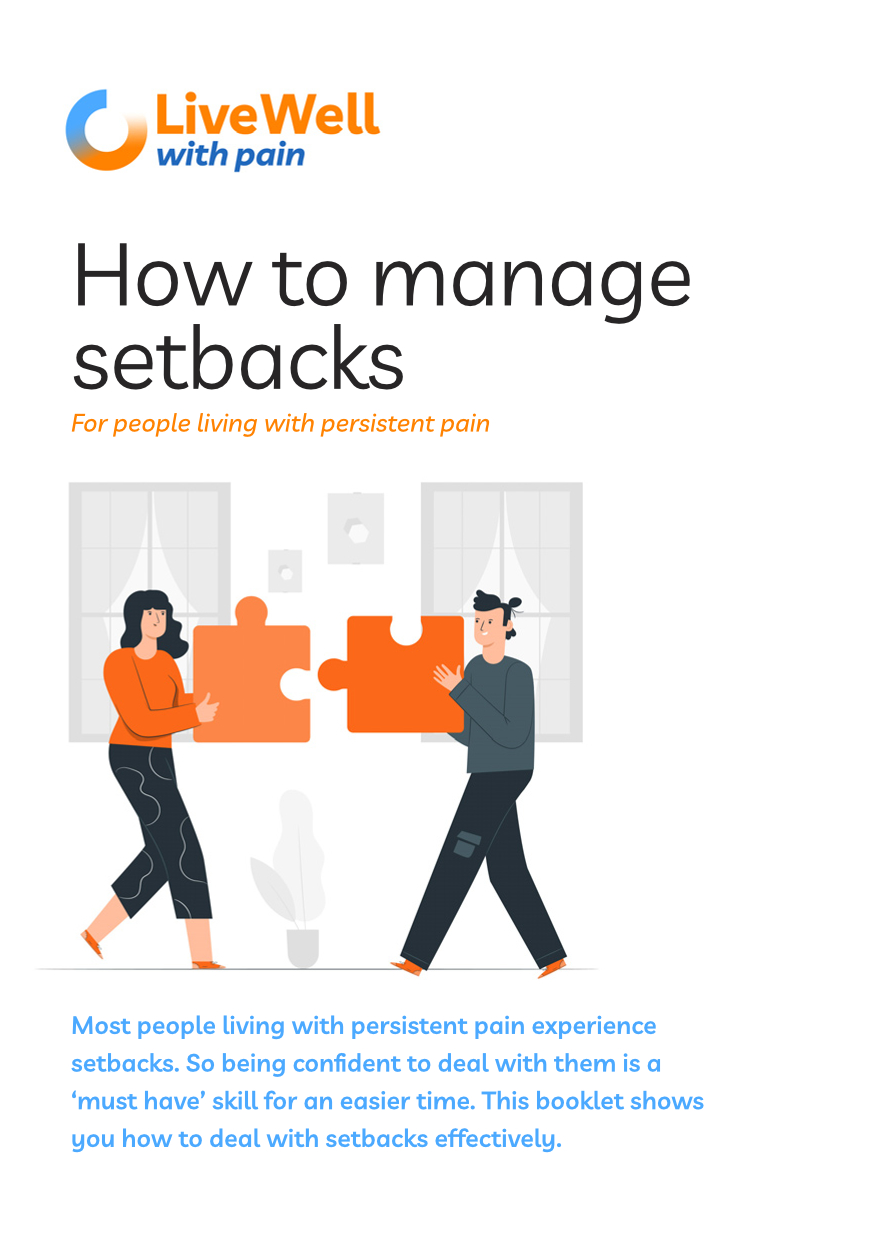Managing setbacks
Setbacks are very common in managing pain. Being confident to deal with them is a ‘must have’ skill for an easier time. So let’s look at how to deal with setbacks effectively . . .
Setbacks can be due to many reasons – think of them a bit like what can happen to athletes in training.
For athletes, a setback can be due to injury, tiredness or mental challenges. A setback with pain is similar and is often linked to tiredness, pacing difficulties or mood issues.
A setback could also be caused by changes in your medication, especially if these changes happen too quickly or at a time when you have other things going on.
Sometimes setbacks can happen for no obvious reason at all.

More ideas to help you manage setbacks
1. Ease back, easy does it
Cut back on normal activities for some days. Take more, small regular breaks in the day, lie or sit down and unwind the body using relaxation breathing.
Bed rest weakens muscle strength rapidly. You lose about 1% of total muscle strength each day if you totally rest up. So keep gently active and moving to speed recovery and shorten setbacks.
Be kind to yourself. Say ‘NO’ to any big, stressful or unhelpful demands until you feel stronger and confident.
Don’t be too proud or scared to ask for help from others – support helps in setbacks!
2. Pace more and keep active
Remember to pace yourself even more. Your body will work with you if you take it gently, steadily and move often (for more about pacing, see Footstep 3).
Keeping active during a setback may seem alien but don’t be put off as it really does work!
Use an effort scale and lower the effort slightly – choose effort levels 3–5 for difficult days.
3. Relaxation
Practice relaxation or mindfulness breathing.
Do things to soothe and calm you – it could be listening to music, knitting, doodling, stroking the cat or dog – whatever works for you.
4. Refocus your thinking
Tackle your thoughts. Try not to think of the setback as the ‘worst thing that can happen’. This puts your mind and the pain into a negative spiral of thought and moods.
Accept that you have a setback and that now is the time for for the setback plan. Share with yourself that “just as it came, it will settle more easily. I now have a plan to help me get back on track”. (For more about acceptance see Footstep 2).
Useful resources
Managing setbacks
Most people living with persistent pain experience setbacks. So being confident to deal with them is a ‘must have’ skill for an easier time. This booklet shows you how to deal with setbacks effectively.

Managing setbacks
Key ideas
✔ People with pain experience setbacks for many reasons – and sometimes for no obvious reason at all
✔ Having a setback plan ready can help you get back on track sooner
✔ Cutting back on activity – but still being gently active – is the key
✔ Using your pacing skills is more important than ever during a setback
✔ Remember to be kind to yourself and that “it will pass”
Back to Ten Footsteps index page
